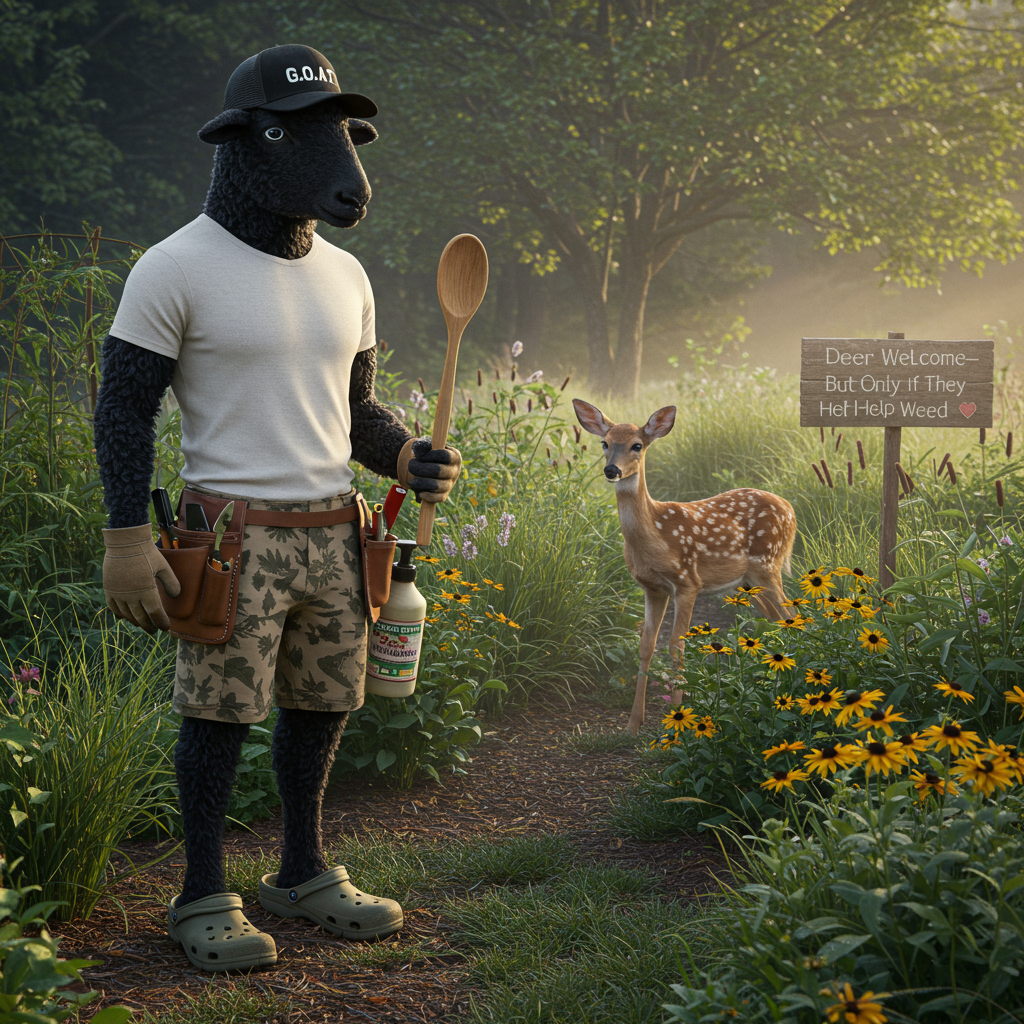Deer-Resistant Garden Planning: How to Keep Your Perennials (and Your Sanity)

A Gentle Guide to Deer-Resistant Garden Planning
For when you love the wildlife… but not that much.
There’s something magical about spotting deer in the early morning light—until they’re ankle-deep in your echinacea, snacking like they own the place. If you’ve ever walked into your garden only to find it mowed down overnight, take heart. You’re not alone, and you can grow a garden that thrives despite the four-legged freeloaders.
Here’s how to plan a beautiful, balanced garden that’s deer-resistant—not deer-proof (because let’s be honest, deer are like toddlers with hooves: persistent, surprisingly agile, and hard to reason with).
1. Start with the Right Plants
Some plants just don’t appeal to deer’s palate. They tend to avoid anything:
-
Fuzzy or leathery (like lamb’s ear and bergenia)
-
Strongly scented (hello, lavender, oregano, and Russian sage)
-
Toxic or milky (think bleeding heart, foxglove, and poppies)
Here are a few perennial stars of the deer-resistant world:
| Perennials | Grasses & Ferns |
|---|---|
| Coneflower (Echinacea) | Japanese Forest Grass (Hakonechloa) |
| Black-eyed Susan (Rudbeckia) | Switchgrass (Panicum virgatum) |
| Yarrow (Achillea) | Lady Fern (Athyrium filix-femina) |
| Bee Balm (Monarda) | Ostrich Fern (Matteuccia struthiopteris) |
| Salvia | Blue Oat Grass (Helictotrichon sempervirens) |
🧠 Gentle Tip: No plant is 100% deer-proof. When food is scarce, even the bitter stuff starts looking like gourmet. Planting strong contenders just tilts the odds in your favour.
2. Layer in Texture & Scent
Deer browse by smell and texture. So mix it up! Combine fuzzy foliage, sharp scents, and structural grasses. A border of ornamental alliums or thyme can act like a polite “keep out” sign—no electric fences required.
3. Design with Strategy, Not Just Style
Think of your garden like a good book: it needs structure, pacing, and maybe a little suspense.
-
Plant in masses. One lavender plant might get munched. A hedge of ten? That’s a statement.
-
Use decoy zones. Tuck ultra-tempting plants (like hostas) in a back corner, surrounded by less appealing options.
-
Go vertical. Deer don’t like to climb. Elevated planters, trellises, and raised beds can keep your tastiest treats just out of reach.
🌱 Mini Guide Moment: Want a simple layout?
Outer Ring: Salvia, Russian Sage, Allium
Mid-Section: Coneflower, Yarrow, Bee Balm
Inner Circle: Delicate ferns and tucked-in surprises
Beauty meets boundaries—with blooms that bite back (metaphorically, of course).
4. Natural Deterrents (That Won’t Scare the Neighbours)
If your local deer are especially cheeky, it’s okay to reinforce your plant choices with gentle deterrents:
-
Motion-activated sprinklers (bonus: fun surprise for the squirrels, too)
-
Homemade sprays (garlic, eggs, water—smells like regret, works like a charm)
-
Scented barriers (bars of Irish Spring, hanging sachets of dried herbs, or even human hair)
5. Make Peace with a Little Nibble
Even the best-laid plans may occasionally fall to hungry mouths. But a well-designed, deer-resistant garden can take the hit and bounce back—just like you do, season after season.
“A deer nibbled my coneflowers once. I planted more. Now we both have snacks.” —A gardener with boundaries and backup plants
Final Thoughts
Deer-resistant gardening is part strategy, part plant selection, and part learning to outwit your neighbourhood wildlife with grace. It’s not about building walls—it’s about planting smarter, layering wisely, and maybe laughing a little when you see hoofprints in the mulch.
So the next time the deer drop by? They’ll pause, sniff, and think twice. And you? You’ll be inside sipping tea, smug in your victory garden.

